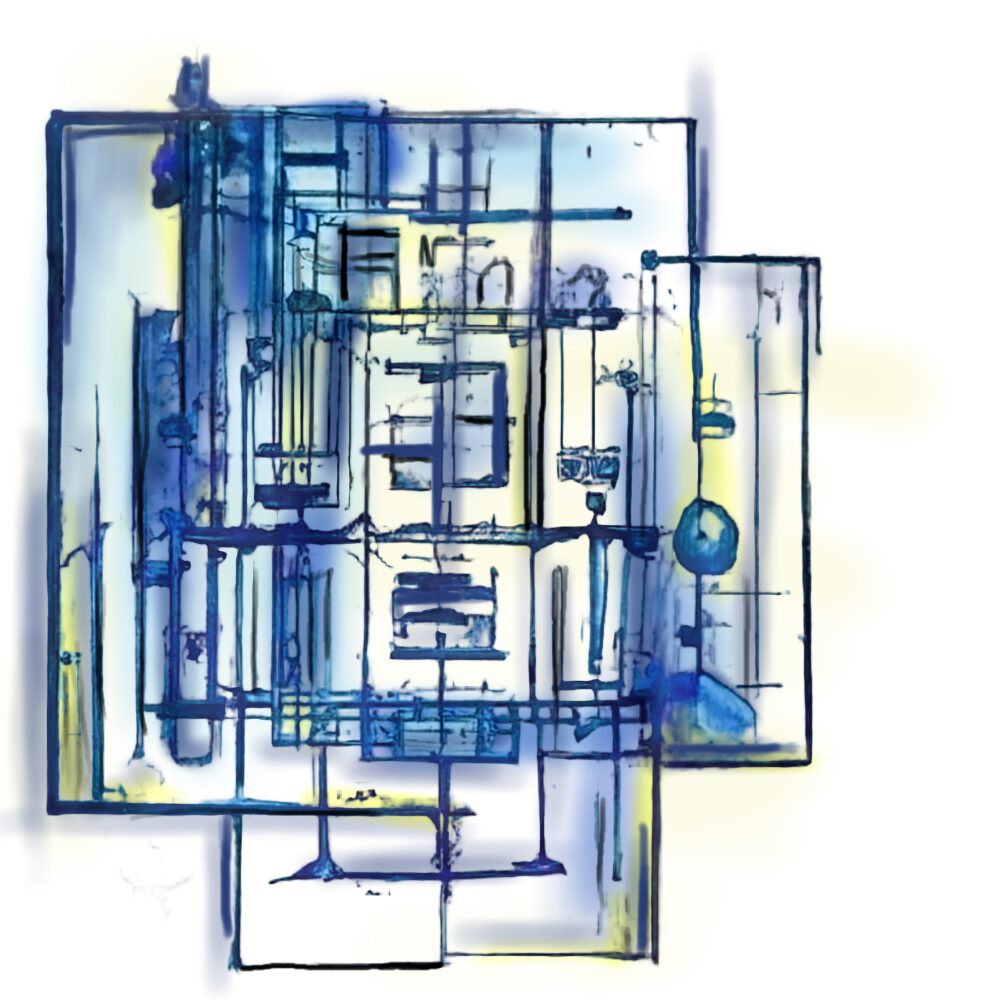
Rapid Prototyping, High- & Low Fidelity
Prototyping und Testing
Efficient Software Development through Prototyping and Testing
Efficient and user-friendly software fulfills the needs of its users completely and optimally. Prototyping and continuous testing are essential here. Prototypes make concepts clear and feasible, while tests ensure that functions are reliable and user-friendly.
Prototypes – Your Path to Better Software
A prototype is a simple model of your planned software or website that allows you to collect feedback and identify problems at an early stage. This saves costs and time, as adjustments can already be made in the development phase.
At prelytics® we develop individual prototypes that are precisely tailored to your needs:
- Software-based prototyping
- Rapid Prototyping/Throwaway Prototyping
- Low-Fidelity-Prototypes
- High-Fidelity-Prototypes

To Ensure the Quality of Your Product
Prototype Life Cycle : Step by Step to the Optimum Solution
Our prototyping methods guarantee the development of effective prototypes that convince your customers and support your business goals.
1
Collect and Analyze User Data
Collect and analyze all relevant data to define the requirements for the prototype.
2
Develop the Prototype
Develop a prototype based on these requirements. The level of detail varies depending on the project phase and prototype type, but real data should be used.
3
Decide Test Goals
Decide which aspects are to be tested, such as concept, navigation, design flow or microcopy.
4
Prepare Test Scenarios
Select a suitable user group and create suitable test scenarios and questionnaires. The focus is on the user’s goals.
5
Conduct and Evaluate User Tests
Carry out the tests, present the prototype and use the results to continuously improve your software.
prelytics Prototypes
Benefits of Our Prototyping Services
Early Feedback and Testing
Feedback from testers promotes continuous product growth and further development and confirms market needs.
Identify Problems Early
Identify errors and misconceptions early on in the development of your product in order to eliminate them more cost-effectively.
Prototypes for Product Presentation
Convince potential investors of your idea with a convincing prototype that is tailored to the market.
Efficient Test Iterations
Fast iterations at the beginning lead to fewer complications during the development of a complex product.
Budgeting and Planning
Visualize the scope and requirements of your product for proper budgeting and planning down-the-line.
Carry Out Practicality Tests
Test the practicability of your idea with minimal time and cost using our prototyping services.
Explanations of the Prototypes
- Software-based prototypes:
- This type of prototype uses digital tools to create models that simulate key features and user interfaces of the planned software. They enable early user feedback and iterative improvements before final development begins.
- Rapid prototyping/throwaway prototypes:
- Rapid prototyping focuses on the rapid creation of prototypes that either serve as disposable models or undergo extensive redesign. This allows for rapid experimentation with different designs and concepts to find the best solution before making major investments.
- Low-fidelity prototypes:
- These prototypes are simple and often non-interactive. They can be paper sketches, simple graphical representations, or click dummies that represent basic layouts and user flows. They are ideal for the initial development phase to visualize general ideas and gather basic feedback.
- High-fidelity prototypes:
- High-fidelity prototypes are detailed and interactive, often with real data and near-realistic user interfaces. They represent the final product as accurately as possible to obtain comprehensive feedback on design, functionality, and user experience, and to identify any potential issues before the final launch.
Risk-Free Software Development through Thorough Testing
Many developers quickly test their software themselves during programming. This may work in the short term, but in the long term it harbors considerable risks. At prelytics®, we take care of automated and manual testing for you to ensure that your software remains reliable and user-friendly in the long term.
Why thorough testing is crucial – your benefits
- Quality assurance: Through comprehensive testing, we ensure that your software meets all design and functional requirements and runs smoothly.
- Cost efficiency: Careful testing saves costs in the long term, as errors are detected and rectified at an early stage before they become apparent to users and cause major problems.
- Improved user experience: An intuitive and comfortable user experience is crucial for the acceptance of your software. Regular testing helps to ensure and continuously improve user-friendliness.
Our comprehensive testing process
prelytics® performs tests at all levels of your software to enable complete and efficient testing. Our process includes unit tests, integration tests, system tests and acceptance tests, which we carry out in a structured and systematic manner.

Questions about Prototyping and Testing?
Frequently Asked Questions (FAQ)

-
What is prototyping and why is it important?
Prototyping is the process of creating an early model or version of a product to test concepts and gather feedback. It is important because it allows ideas to be visualized quickly, potential problems to be identified early and suggestions for improvement to be implemented before the final product is developed. Prototyping helps to save time and costs by ensuring that the final product meets requirements and expectations.
-
What types of prototypes are there?
There are different types of prototypes, depending on the purpose and phase of the project. The most common types include:
• Paper prototypes: Sketches or simple diagrams that illustrate the layout and interaction of a user interface.
• Click-Dummies: Interactive models that simulate user guidance and design without the full functionality.
• Functional prototypes: Models that implement some or all of the functions of a product in order to test its behavior. -
How does prototyping support product development?
Prototyping supports product development by enabling ideas to be tested quickly and improved iteratively. Through the early use of prototypes, teams can gather feedback from stakeholders and users to ensure that the product meets their expectations. Prototyping also helps to identify and solve technical challenges before they become costly. It reduces the risk of undesirable developments and speeds up the time to market.
-
What is testing and why is it crucial?
Testing is the process of checking a product or system to ensure that it meets the specified requirements and is free from defects. It is crucial because it ensures the quality and reliability of the final product. Thorough testing allows problems to be identified and fixed before the product is released to the market, increasing customer satisfaction and reducing the likelihood of recalls or failures.
-
Which test methods are usually used?
There are various test methods that can be used depending on the type of project, including:
• Unit Testing: Testing individual components or functions to ensure that they work correctly.
• Integration Testing: Checking whether different components of a system work together seamlessly.
• System Testing: Overall testing of the system to ensure that it meets the requirements.
• User Acceptance Testing (UAT): End users test the system to confirm that it meets their needs.
• Performance Testing: End users test the system to confirm that it meets their needs. -
How long does the prototyping and testing process take?
The duration of the prototyping and testing process depends on the complexity of the project and the specific requirements. Simple prototypes can be created in a few days, while complex functional prototypes can take several weeks. The testing process can take anywhere from a few days to several months, depending on the scope and type of testing. An iterative approach, in which prototypes and tests are developed in parallel, shortens the overall duration and improves quality.
-
Is prototyping and testing also suitable for small projects?
Yes, prototyping and testing are also extremely valuable for small projects. Even for smaller projects, these methods can help speed up product development, improve quality and ensure that the final product meets requirements. By using prototypes, ideas can be quickly validated and usability optimized, while testing ensures functionality and reliability.
-
Can I carry out prototyping and testing myself, or should I call in an expert?
Although basic prototyping and testing can be done in-house, it can be useful to bring in experts to handle more complex tasks. An experienced partner can ensure that advanced techniques are applied correctly and that the product is developed and tested optimally. Experts bring valuable experience that can help reduce development time, save costs and maximize the quality of the final product.






